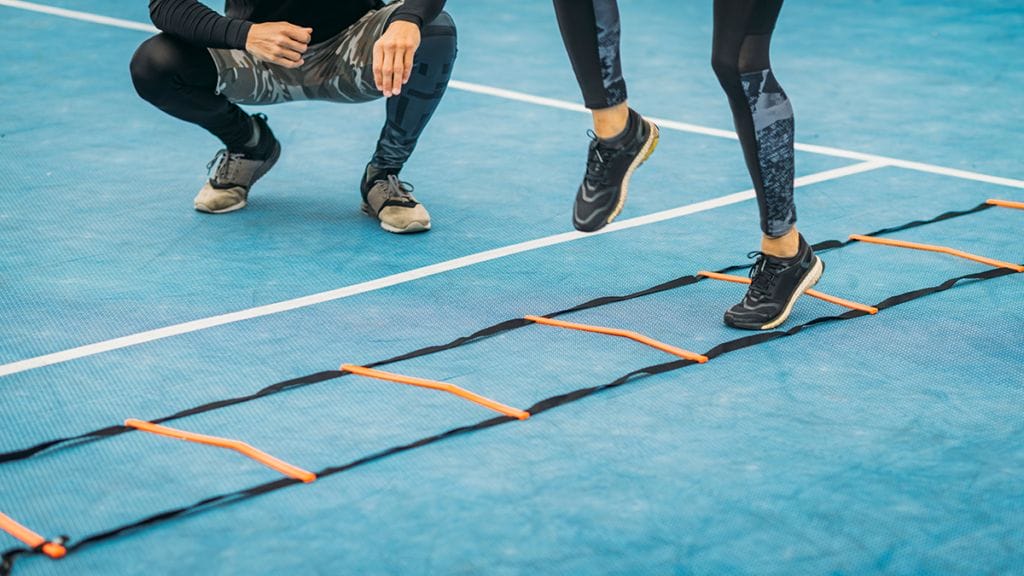For most sports, being agile is one of the most beneficial skills one can have. Having good agility means you can actively move, stop, and change direction swiftly while remaining firmly in control of your body’s balance, body positioning, and coordination.
In other words, an agile athlete will have an edge offensively and defensively in most sports. Basketball, football, tennis, soccer, and baseball require what some would call an elite level of agility. In this context, the demand for heightened agility is necessary because the body has to react to the other player’s movements and/or the ball quickly.
For example:
When guarding someone in basketball, you may not know where the other players or the ball are going—at least not instantly. Having quick reactions to start and stop, to follow either the player or the ball, takes a lot of coordination and balance. Without these capabilities, an athlete’s body can end up in compromising situations, where they become out of position and prone to injury.
Multiple benefits can be derived from agility training. Elite athletes who train to improve agility are emphasising high performance over “injury prevention” – improving balance, body positioning and awareness, recovery time, coordination, and cognitive function.
Although it’s still possible to be susceptible to injury even with the best reflexes and coordination, being aware of how injuries occur (i.e., during high exertion levels) will help an athlete best prepare their body to adapt to these environments.
For example, without proper body positioning, a sudden change of direction could lead to a non-contact knee injury, due to a combination of poor positioning, being off-balance, fatigue, and lack of situational awareness.
Fortunately, agility training can address these potentialities.
Training for starting and stopping in a controlled environment can be highly beneficial for athletes. An agility-trained athlete learns movement patterns – countering the possibility of being “juked” by other players on-field or on-court.
Ramping up training with an obstacle course of cones and subjecting athletes to multiple starting and stopping positions can significantly improve situational awareness and body positioning, leading to better overall performance on-field. Experienced coaches design these obstacle courses to test an athlete’s ability to perform under simulated conditions – where prearranged starting and stopping movements are timed, pushing each athlete to finish as fast as possible in a demanding environment.
Once the controlled environment has been mastered, athletes can move into a higher level of agility training where new and unexpected patterns or variables are introduced.
In this scenario – the athlete isn’t aware of the obstacle course’s prearranged demands—as the conditions are set up to change from moment to moment.
Perhaps the lighting is different. Or the cones might be different colors. Your body and mind will become accustomed to processing and reacting to unexpected changes in very short order.
The coach may switch things up by calling out specific colored cones, prompting the athlete to react to a changing environment—making the situation more realistic, approximating normal sport/play. Additionally, this stage of training will enhance an athlete’s cognitive skills and reaction speed.
An athlete’s brain learns to take important cues when muscles are tired. Maintaining balance and body positioning, posture, and situational awareness becomes difficult due to a lack of coordination in the muscles. Agility training becomes an excellent exercise for active recovery following a workout. It is important to remember that agility training is essential for almost all athletes to be successful. Still, you do not have to be an athlete to realize these benefits.


